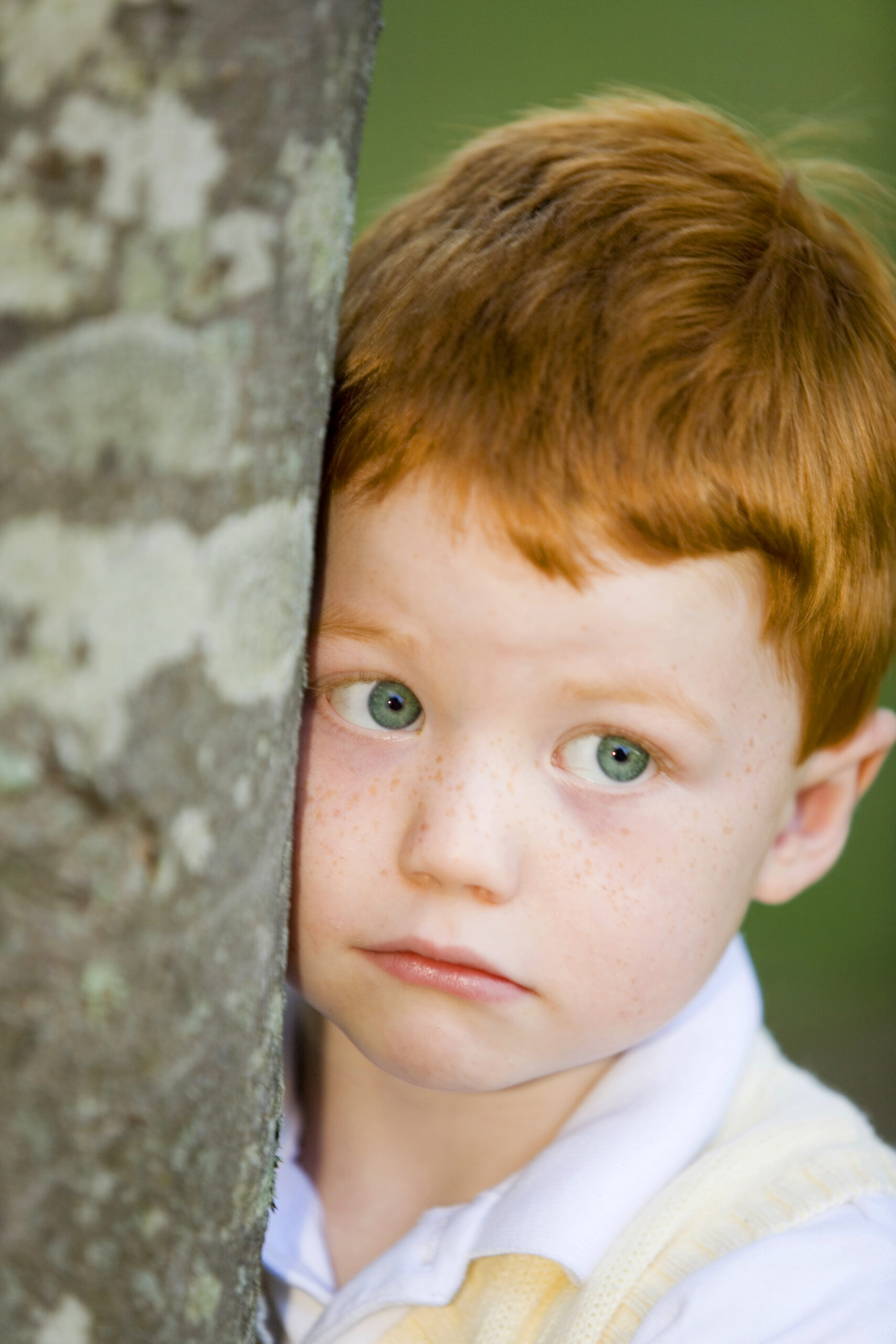Developmental ResourcesParenting Skills
Temperament & Discipline
Appreciating your child’s unique personality – Recognising difference
Every child has a unique personality. Observe any group of children playing and you will see the following:
- some will be moving quickly and with energy, others will be sitting quietly;
- There will be groups of children talking loudly, others will talk slowly and reflectively; some will be in a group, others will be by themselves;
- some will be bossy, others will be compliant; some will be gentle, others will be strong willed.
Interestingly, children are born with distinct ways of thinking, feeling, and acting. This inborn genetic ‘wiring’ is called temperament, and this is an important component of your child’s personality. It will have a major impact on your child’s emotions, how they eat, sleep, and react to the world around them.
By understanding your child’s personality and working with it, you will find parenting more fulfilling and you’ll get better results. Understanding builds strong emotional connections with your child. It enables you to appreciate the unique way your child sees their world. When a child feels understood and accepted, they usually want to please the one who understands them.
What is temperament?
Children are uniquely different. Temperament is like a tree seed. If you look at two seeds there isn’t a lot of difference between them. But if you were to look at the genetic coding contained within each seed you’d see significant differences. While the difference between a pohutukawa seed and a kauri seed isn’t great, contained within each seed is their distinctive blueprint. Each is a variety of tree, but each is organised differently from the beginning. Even when they are seedlings the difference between species is insignificant. But a closer examination always reveals that a pohutukawa tree is always a pohutukawa tree, and not a kauri tree.
Therefore, just as a kauri seed will only become a kauri tree, so a child’s personality remains the same from birth. The seasons, or environment never changes the basic make-up of the tree. Kauri’s cannot be reorganised to be pohutukawa’s. Children, in a similar way, are organised in unique ways that determine their pattern of growth and development.
Personality History
For thousand’s of years, beginning with Hippocrates in the 5th century BC, people have recognised that while people are uniquely different, they are predictably different. This is because these differences are formed by the interaction of two behavioural dimensions:
Dimension A
Introvert/Extrovert. This dimension identifies where people get their energy. Introverts need quiet time to be energised; extroverts need social time.
Dimension B
Task/Relationship. This dimension identifies where people focus their energy – on a task or on people.
The interaction of these two dimensions forms 4 temperament styles.
As a result of this observation, Hippocrates termed these four styles:
Choleric (Extrovert-Task)
Likes to be boss, high energy, direct, impulsive, impatient, this is the strong willed child!
Melancholic (Introvert – Task)
Like things done correctly, almost demands a routine, likes being by themselves, contemplative.
Phlegmatic (Introvert – Relationships)
Likes cooperating, calm, slow-paced, likes sharing, these children are very easy to parent.
Sanguine (Extrovert – Relationships)
Socially active, energetic, likes being outdoors, highly imaginative, funny and mischievous.
CHOLERIC STYLE
- Let you know what they want in a hurry
- Eat, drink, and move fast
- Determine their own bedtime
- Tell other children what to do
- Play well independently
- Ignore the word “no” when possible
- Try to walk early
- Need to be kept busy “I’m bored”
- Make their own rules
- Likes childcare and its competitive activities
EXTREME BEHAVIOUR
- Become impatient with anything slow
- Fight to have their own way
- Can become demanding and rude
- Can try to control situations and people
- Insist on having the best toy
SANGUINE STYLE
- Like to be outdoors
- Don’t mind getting dirty, wet, or messy
- Find creative uses for common items
- Show lots of imagination in play
- Can be funny and mischievous
- Jump quickly from one activity to the next
- Love to try new challenges
- Need to be able to move and explore
- Change the rules in a game
- Likes the creative and entertaining aspects of preschool
EXTREME BEHAVIOUR
- Have a knack for getting into trouble
- Do what they want regardless of the rules
- Put their own spin on the truth
- Push their luck to the limit
- Create chaos and confusion for fun
MELANCHOLIC STYLE
- Care about their appearance
- Avoid getting messy or dirty
- Get into planned routines easily
- Ask “Why” often and expect correct answers
- Prefer mental games to physical games
- Can focus on one toy or activity for a long time
- Takes things apart and puts them together
- Put themselves on a schedule
- Try hard to follow the rules and do what is proper
- Likes the structure of preschool and likes to learn
EXTREME BEHAVIOUR
- Insists on a special place for everything
- Can be obsessive about what belongs to them
- Gets very upset if a toy is broken
- Worry about things that might happen
- Dislike their personal space being invaded
PHLEGMATIC STYLE
- Cooperate in helping others
- Eat, drink, and move slowly
- Go to bed without a fight
- Get pleasure from sharing their toys
- Play well with other children
- Make friends easily
- Take their time in trying to walk
- Show affection with hugs and kisses
- Plays by other’s rules
- Likes preschool
EXTREME BEHAVIOUR
- Cry when they are hurt or tired
- Let other children boss them around
- Whine and beg for what they want
- Can be very shy
- Clings to people who make them feel safe
More recent researchers use different labels to categorise temperament:
- Social Styles: Driver, Expressive, Amiable, Analytical
- DiSC model: Dominance, Influencing, Steadiness, Compliance
- Myers-Briggs Type Indicator: SJ/SP/NF/NT
- Tracy Hogg: Angel, Textbook, Touchy, Spirited, Grumpy
Consequently, each personality style is inherently different, but equally valuable. Children may demonstrate some of the behaviours from each of the temperament styles, but if you observe closely you’ll see they think, feel, and act in one or two of the styles with greater intensity and frequency, than the others.
CHILDREN’S TEMPERAMENT STYLE CHARACTERISTICS
One of the most detailed and longest ongoing study of children’s personality is the New York Longitudinal Study, by researcher’s Alexander Thomas and Stella Cress. Their research identified nine characteristics where children innately differ. By the time an infant is 2 to 3 months old their temperament individuality is well established. Their research also found that when children’s characteristics were clustered together it resulted in three types of children:
THE EASY CHILD (40% of the sample).
- This child is easy to parent because they establish regular routines in infancy, and are generally cheerful and adapt well to new experiences.
THE DIFFICULT CHILD (10% of the sample).
- This child is irregular in routines, is slow to accept new experiences, and tends to react negatively and intensely. They are difficult to parent. The strong willed child fits in this group.
THE SLOW-TO-WARM-UP CHILD (15% of the sample).
- This child is inactive, shows mild, low keyed reactions, is negative in mood, and adjusts slowly to new experiences. Parents often describe this child as shy.
35 per cent of the children in the sample didn’t fit within any of the above three categories, but had combinations of the three types. Most parents can quickly identify which one of these three groups their child best fits within.
Often, children have regular cycles of activity. They eat, sleep, and go to the toilet on schedule, almost from birth. Other children are less predictable. Some children are very active. Even before they are born they kick a lot. Once they are born they are always on the go, kicking off their blanket or running around doing many activities. Other children are less active – they snooze serenely, and are able to sit peacefully and listen to a story. Some kids face the ‘new’ with curiosity and delight. They readily accept new vegetables, or a new caregiver. Other kids are slower to warm up to change, schedules, caregivers, or food.
Consider where your child’s regular cycle is:
Go, Go, Go OR Low Activity
Regular OR Irregular
Likes Change OR Cautious
Read the following eight characteristics and assess how your child responds and reacts for each characteristic.
Think of the scale or ‘percentage’ your child would score on each of these 8 attributes:
- Activity Level
- Rhythm Cycle
- Approach-Withdrawal
- Intensity of Reaction
- Responsiveness
- Quality of Mood
- Distractibility
- Attention Span
By reflecting on how your child reacts on these eight characteristics, it will provide you with valuable awareness and insight into how your child thinks, feels and acts – their unique personality. This knowledge will help you become a more intentional parent.
Personality Summary:
Finally, it’s important that we remember that personalities are unique and different. Children don’t always have the same temperament as their parents. Each child is unique and needs to be understood by their parent and not judged or disciplined for being different. Some children play happily with one toy for a long time. Others quickly drop one activity for another. Some children laugh or cry with great vigour. Others are much calmer, simply responding with a smile or a whimper. Some wake and coo while waiting to nurse, or have their nappies changed. Others wake screaming with hunger. Similarly, some children take a tumble while learning to walk and just pick themselves up and continue. Other toddlers fall over and yell with indignation. Some children seem to sense every sight, sound and touch. For instance, they waken at the slightest noise, or turn away from a distant light. Others seem unaware even of bright lights, or loud noises.
Some children seem constantly happy. They smile and laugh a lot. Other children are less expressive and seem constantly unhappy; they are ready to protest at any moment. All children fuss when they are hungry, but some will stop if someone distracts them – gives them a dummy or sings them a song. Others will keep fussing. Some children can easily be distracted from a fascinating, but dangerous object, and diverted to a safer play thing. Others are more single minded, refusing to be distracted.
Your child is uniquely different. Celebrate that difference.
Check out our parent workshop to discover you and your child’s unique temperament and learn how to parent in a way that helps your child express their personality in a way that will maximise their unique strengths and abilities.



